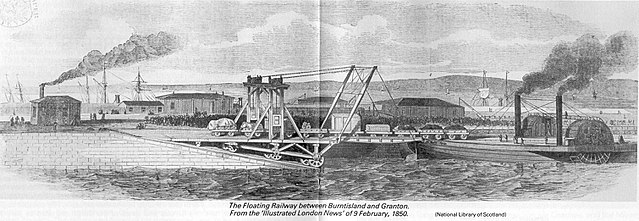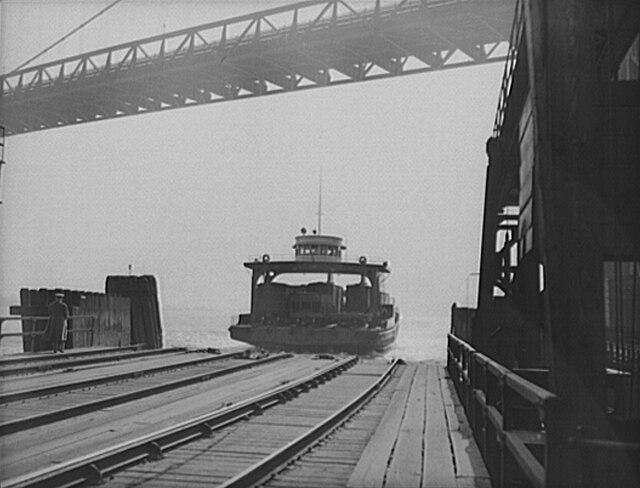Tōya Maru (洞爺丸) was a Japanese train ferry constructed by Japanese National Railways (JNR) which sank during Typhoon Marie, known locally as the Tōya Maru Typhoon, in the Tsugaru Strait between the Japanese islands of Hokkaidō and Honshū on September 26, 1954. JNR announced in September 1955 that 1,153 people aboard were killed in the accident. However, the exact number of fatalities remains unknown because some victims managed to obtain passage on the ship at the last minute, and others canceled their tickets just before the incident occurred.
Toya Maru at an unknown date
The end of Tōya Maru
Memorial for the disaster
A train ferry is a ship (ferry) designed to carry railway vehicles. Typically, one level of the ship is fitted with railway tracks, and the vessel has a door at the front and/or rear to give access to the wharves. In the United States, train ferries are sometimes referred to as "car ferries", as distinguished from "auto ferries" used to transport automobiles. The wharf has a ramp, and a linkspan or "apron", balanced by weights, that connects the railway proper to the ship, allowing for tidal or seasonal changes in water level.
Interior of a roll-on roll-off train ferry in Villa San Giovanni, Italy
The 'Floating Railway', opened in 1850 as the first roll-on roll-off train ferry in the world.
Bouch's ferry design. Note the adjustable ramp of the Granton train ferry.
Loaded train ferry approaches dock in Detroit, Michigan, United States in April 1943.







